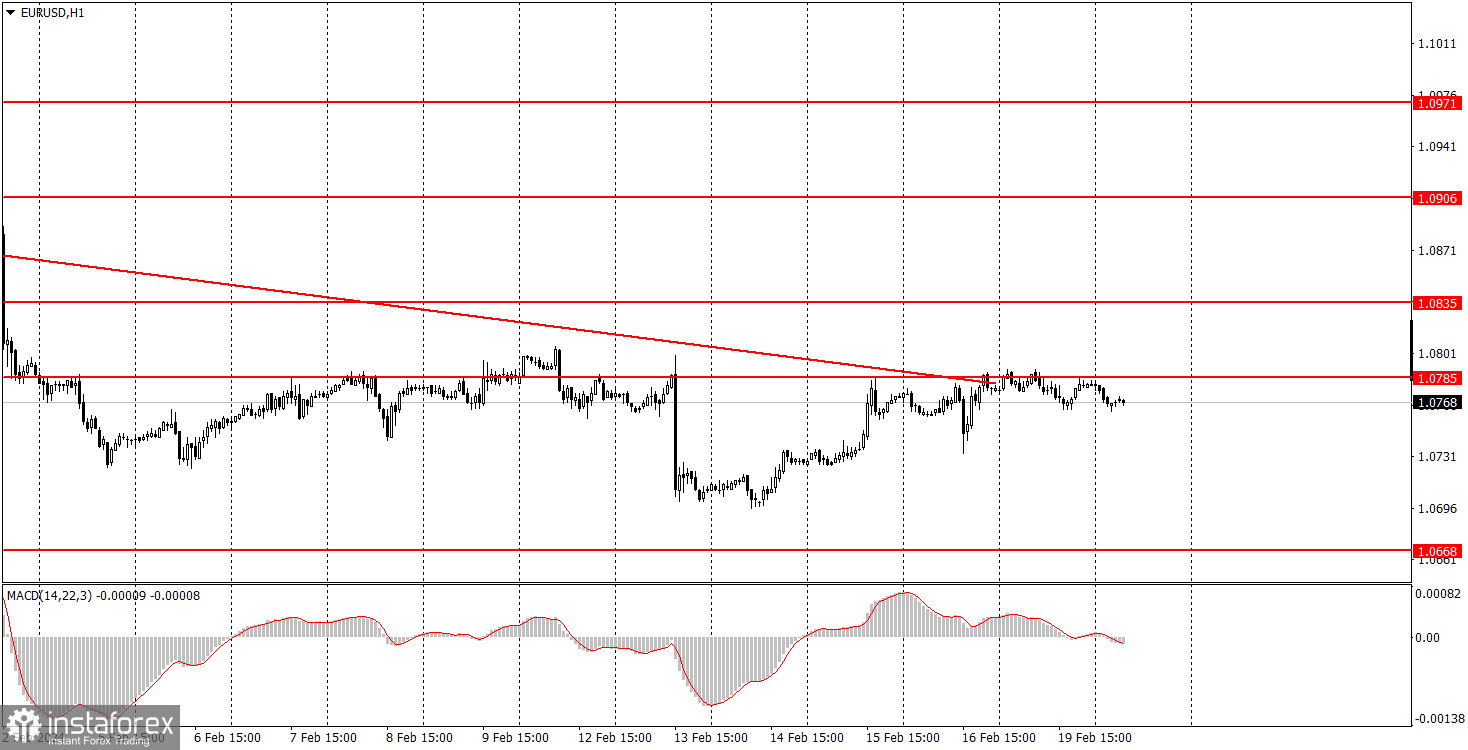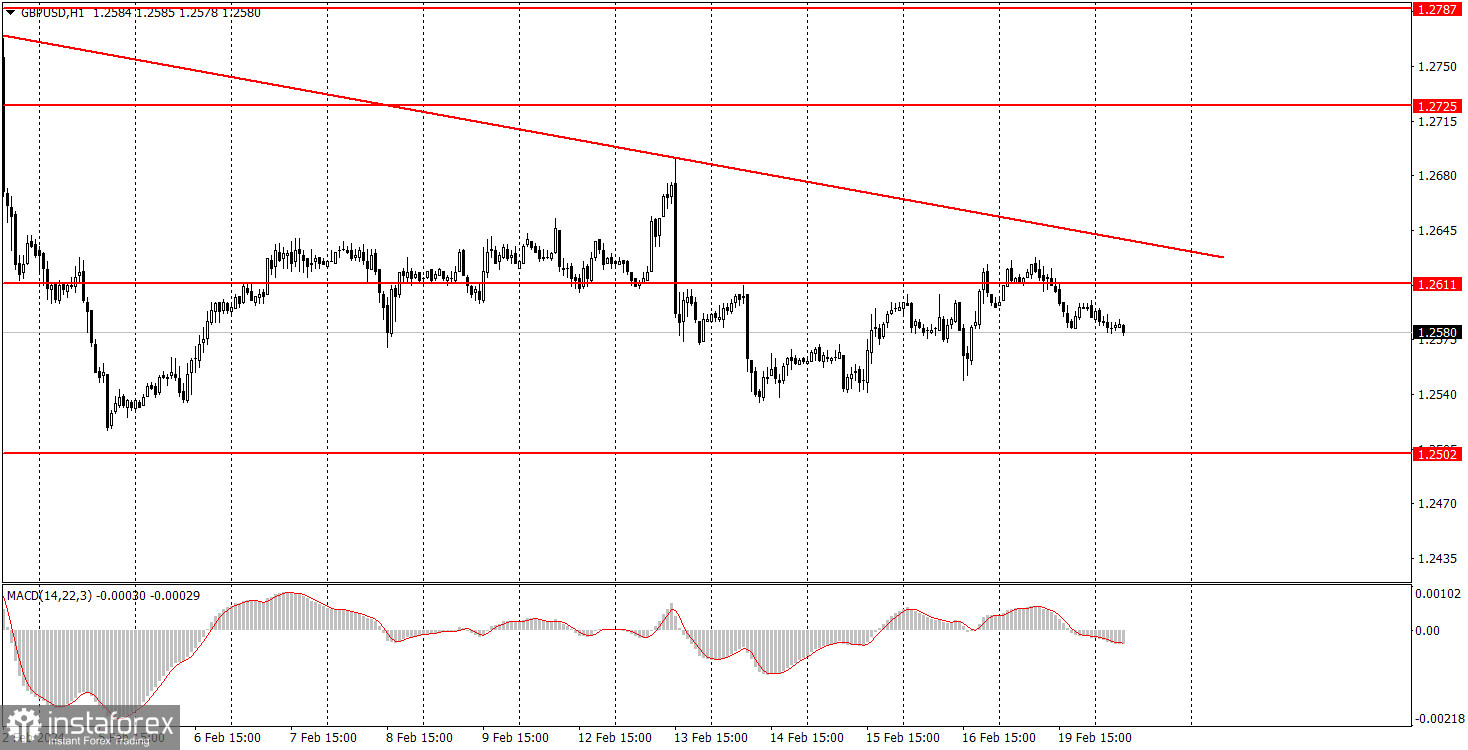Analysis of macroeconomic reports:

No macroeconomic events scheduled for Tuesday. There won't be any secondary events either, so you can rely only on technical analysis when making trading decisions. However, volatility may be very weak. It was weak on Monday, and we see no reason why it would sharply increase on Tuesday.
Analysis of fundamental events:
Among the fundamental events of Tuesday, we can only highlight Bank of England Governor Andrew Bailey's speech. Back at the January meeting, the BoE slightly softened its rhetoric, but we did not hear any dovish statements about a possible rate cut in the near future. Therefore, it is unlikely for Bailey to mention that the central bank is finally ready to lower rates. However, he may comment on the latest GDP report, which is also very interesting, as the UK economy contracted by 0.3%.
General conclusion:
On Tuesday, there is only one event that may catch the attention of traders. Bailey's speech will be important for the British pound, but not for the euro and the dollar. In case of rebounds from important levels or trendlines, one can expect a decline in both currency pairs. But take note that today, there's a much higher chance of seeing a low-volatility flat phase.
Basic rules of a trading system:
1) Signal strength is determined by the time taken for its formation (either a bounce or level breach). A shorter formation time indicates a stronger signal.
2) If two or more trades around a certain level are initiated based on false signals, subsequent signals from that level should be disregarded.
3) In a flat market, any currency pair can produce multiple false signals or none at all. In any case, the flat trend is not the best condition for trading.
4) Trading activities are confined between the onset of the European session and mid-way through the U.S. session, after which all open trades should be manually closed.
5) On the 30-minute timeframe, trades based on MACD signals are only advisable amidst substantial volatility and an established trend, confirmed either by a trendline or trend channel.
6) If two levels lie closely together (ranging from 5 to 15 pips apart), they should be considered as a support or resistance zone.
How to read charts:
Support and Resistance price levels can serve as targets when buying or selling. You can place Take Profit levels near them.
Red lines represent channels or trend lines, depicting the current market trend and indicating the preferable trading direction.
The MACD(14,22,3) indicator, encompassing both the histogram and signal line, acts as an auxiliary tool and can also be used as a signal source.
Significant speeches and reports (always noted in the news calendar) can profoundly influence the price dynamics. Hence, trading during their release calls for heightened caution. It may be reasonable to exit the market to prevent abrupt price reversals against the prevailing trend.
Beginners should always remember that not every trade will yield profit. Establishing a clear strategy coupled with sound money management is the cornerstone of sustained trading success.
 English
English 
 Русский
Русский Bahasa Indonesia
Bahasa Indonesia Bahasa Malay
Bahasa Malay ไทย
ไทย Español
Español Deutsch
Deutsch Български
Български Français
Français Tiếng Việt
Tiếng Việt 中文
中文 বাংলা
বাংলা हिन्दी
हिन्दी Čeština
Čeština Українська
Українська Română
Română


